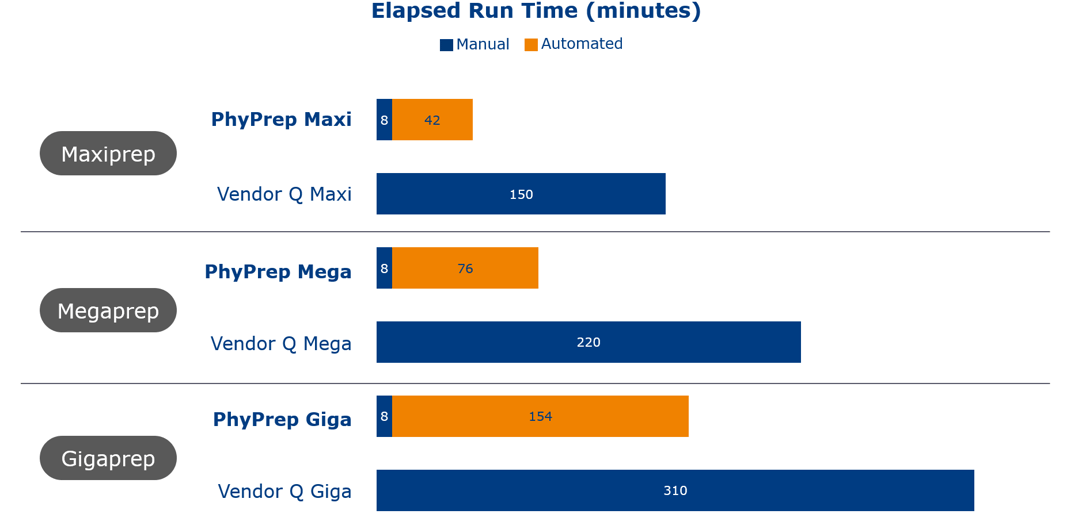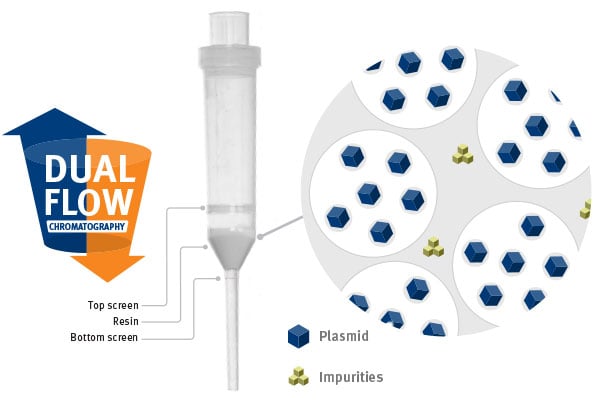Plasmids are one of the cornerstones of modern biology, providing the foundation for several areas of important research including DNA vaccines, mRNA vaccines, viral vectors, and monoclonal antibodies. This small, circular DNA is found in bacterial cells and is used widely as a vector for specific DNA fragments across multiple fields, including molecular biology, biochemistry, biotechnology, and cell biology. Plasmid purification, therefore, has a wide range of applications and its importance is reflected in recent scientific triumphs including the development of COVID-19 vaccines and advancements in gene and cell therapies.
Plasmids that are used in a lab setting have been designed to introduce a DNA fragment into another cell via the use of cloning methods. They are attractive tools for scientists as they are easy to modify and can self-replicate within a cell. As a result, plasmid purification is a fundamental technique used every day in labs all around the world.
One of the most widely used applications of plasmids is in transient transfection which results in the mass production of proteins and viral vectors. Through this technique, plasmids enable mammalian cells to express the protein that is coded by the gene they carry. Plasmids produced for transfection studies also need to be of very high quality and relatively pure for successful transfections to take place, which can also be time-consuming. While there have been numerous advances in other aspects of the production of mammalian proteins, plasmid purification technology has remained unchanged for over 40 years but all this is about to change with the introduction of Biotage's PhyPrep plasmid purification system which can simplify and streamline the plasmid purification process, saving you both time and money and providing better quality results.
Plasmid Purification Challenges
Before we dive into Biotage's PhyPrep Plasmid Purification system, you may be wondering what the issue is with the techniques currently in use in lab settings across the globe, especially if these techniques have not been changed in over 40 years. Well to start, large-scale plasmid purification is a long, drawn-out process that can take days in the lab or weeks if it is outsourced. There are also several challenges that we can highlight that are associated with developing and purifying plasmids for scientific studies, especially when the amount of plasmid required is in the maxi-, mega-, or giga- scale.

Firstly, plasmid purification is not only a labor-intensive process that involves multiple steps such as centrifugation, lysis of cells, and chromatography but it also involves a lot of time spent at the bench carrying out repetitive and monotonous tasks. This highly laborious process involves the addition of multiple reagents which leaves a wide margin for human error. Secondly, the purification step has additional challenges including removing contaminants such as RNA, host cell DNA, and endotoxins as well as cell debris. Plasmids typically represent less than 1% of the dry cell mass so there are a lot of potential contaminants that are structurally similar to plasmid DNA that need to be removed. In addition, when producing plasmids on a large scale there is also a large cell pellet which can be difficult to resuspend. When we look at all this together it’s clear that plasmid purification is a long, tedious process with multiple steps that leaves room for several errors to be made, potentially compromising the quality of the plasmids produced. With all this in mind, Biotage has developed an automated process that simplifies the mass scale plasmid purification process, offering high quality and consistent results every time. The PhyPrep plasmid purification process can address all your mass protein production needs as it is purely for Maxi, Mega, and Giga scale plasmid purification. It is transfection grade and endotoxin-free and is straightforward to use. So let's look at how it works.
Automated Plasmid Purification
The PhyPrep instrument is both simple and robust and requires less than 8 minutes of your time for sample preparation but how exactly does it work?

Figure 1: Automated vs manual plasmid purification
This system makes use of dual-flow chromatography technology which is highly reproducible and easy to automate. Dual-flow chromatography involves using a pipette tip column that is packed with resin. The sample is loaded and flows back and forth in a slow and highly controlled manner.

Figure 2. Dual flow Chromatography
Highly reproducible yields of up to 1mg for MaxiPrep, 5 mg for MegaPrep and 10 mg for GigaPrep can be achieved. Purification performance and transfection efficiency is comparable to the leading manual plasmid preparation alternatives available on the market.
The automated plasmid purification allows the user to spend their time on other activities and return once the plasmid purification has been completed. The resulting plasmids are pure, endotoxin-free, and supercoiled which is an important criterion for transfection efficiency.
Why Choose PhyPrep?
The PhyPrep instrument is a fast and efficient machine that enables researchers to produce plasmids using an automated system that results in high-quality plasmids the very same day. Our instrument produces quality plasmids consistently and removes the need for long, laborious days in the lab. The workflow, kit, and software are easy to use, enabling you to devote less time to monotonous plasmid purification and more time to those tasks that you often struggle to fit into your day. In addition, it is cost-effective, reliable, and allows you to have complete control over the whole process.
If you want to learn more about plasmid purification, watch the webinar our senior application scientist, Shadie Nimri, produced on "Novel approach to automating Maxi, Mega, and Giga plasmid DNA preparations."

 Organic Workflow
Organic Workflow Peptide Workflow
Peptide Workflow Scale-Up Flash Purification
Scale-Up Flash Purification  Sample Preparation
Sample Preparation Biomolecule Purification
Biomolecule Purification Oligo synthesis
Oligo synthesis Scavengers and Reagents
Scavengers and Reagents Service & Support
Service & Support Accessories & Spare parts
Accessories & Spare parts Investors
Investors Reports & News
Reports & News The Share
The Share Corporate Governance
Corporate Governance Calendar
Calendar Sustainability
Sustainability Our Offering
Our Offering Our History
Our History Our Locations
Our Locations Leadership
Leadership